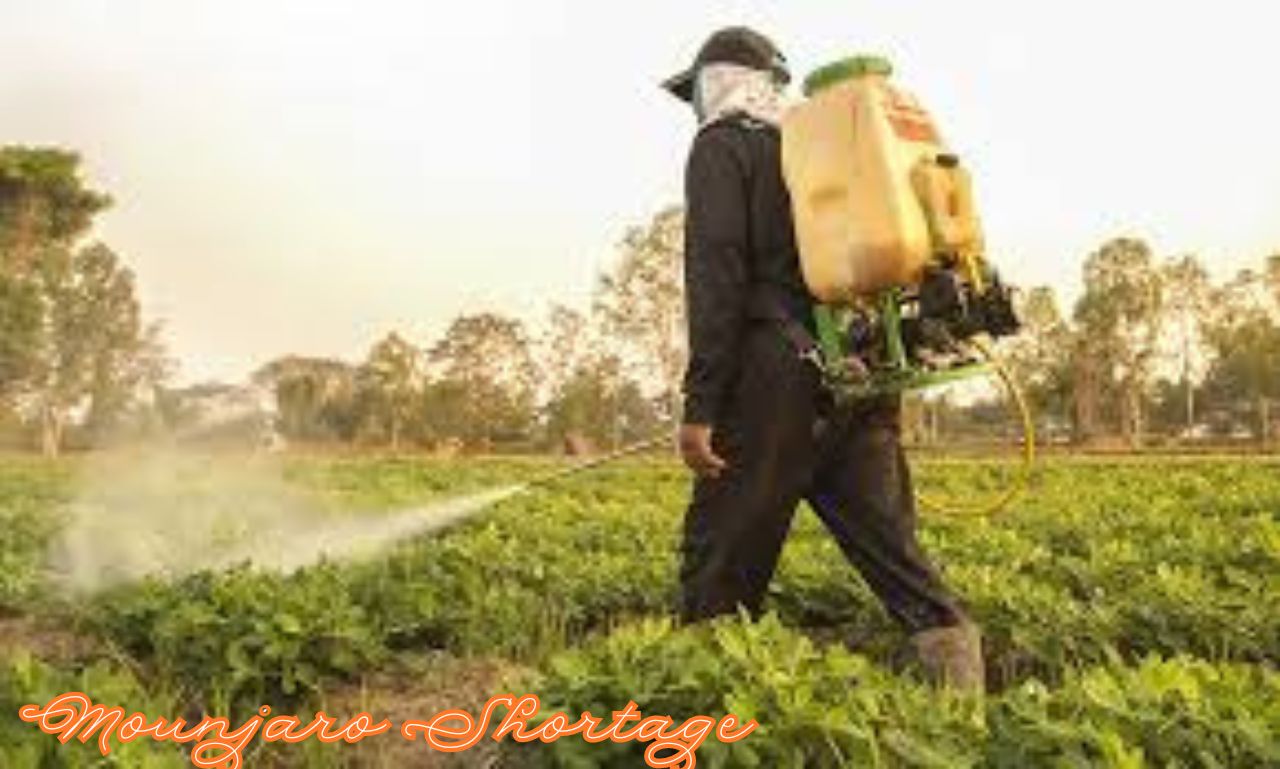agriculture
How Does the Mounjaro Shortage Impact Farmers and Consumers?

Introduction to the Mounjaro Shortage
Welcome to the world of agriculture, where every seed planted has a story to tell. Today, we delve into the intriguing tale of the Mounjaro shortage and its far-reaching impacts on both farmers and consumers alike. Join us as we uncover the root causes of this scarcity, explore its effects on agricultural communities, and discuss potential solutions to mitigate its consequences. The Mounjaro shortage is not just a challenge – it’s an opportunity for innovation and growth in our farming landscapes. Let’s dig in!
Causes of the Shortage
The Mounjaro shortage has been attributed to various factors that have impacted its supply chain. One of the main causes is climate change, leading to unpredictable weather patterns and shifting growing conditions for the crop. This can result in poor harvests and lower yields for farmers cultivating Mounjaro.
Additionally, changes in land use practices have also played a role in the shortage. As urbanization expands and agricultural land diminishes, there is less space available for Mounjaro cultivation. Farmers may also be facing challenges such as lack of access to quality seeds or fertilizers, further limiting their ability to grow this crop successfully.
Global market demands and fluctuations in prices can also contribute to the shortage of Mounjaro. When prices are low, farmers may opt to switch to other more profitable crops, reducing overall production levels of Mounjaro on the market. These combined factors have created a complex web of issues impacting the availability of this essential crop for both farmers and consumers alike.
Effects on Farmers
The shortage of Mounjaro has had significant effects on farmers who rely on this crop as a staple in their livelihoods. With the decrease in Mounjaro production, farmers are facing challenges such as reduced income and loss of crops. This directly impacts their ability to support themselves and their families.
Farmers have been forced to explore alternative crops or sources of income due to the scarcity of Mounjaro. This transition can be challenging and may require additional resources and time investment from the farmers. Additionally, fluctuations in supply and demand have made it difficult for farmers to predict market trends and plan accordingly.
Furthermore, some farmers may experience increased competition for limited resources, leading to potential conflicts within agricultural communities. The ripple effects of the Mounjaro shortage extend beyond just a decline in crop availability; they affect the entire ecosystem that sustains these farming communities.
Effects on Consumers
Consumers are feeling the impact of the Mounjaro shortage in various ways. With fewer Mounjaros available for purchase, prices have surged, making it harder for consumers to afford this beloved fruit. Many who rely on Mounjaros as a staple in their diet are now facing challenges in accessing this nutritious food source.
The scarcity of Mounjaros has also led some consumers to seek alternative fruits, which may not provide the same nutritional benefits or taste they are used to. Additionally, the decrease in supply means that consumers may have to travel further or search more diligently to find Mounjaros at all.
For those who enjoy using Mounjaro in cooking and baking, the shortage has forced them to reconsider recipes or find substitutes. The ripple effect of this shortage is evident across various consumer preferences and habits related to this popular fruit.
Possible Solutions
Facing the challenge of a Mounjaro shortage, it becomes crucial to explore potential solutions. One approach could involve implementing sustainable farming practices to increase Mounjaro yields. This might include using organic fertilizers or rotating crops to maintain soil health.
Another solution could be investing in research and development to breed new varieties of Mounjaro that are more resilient to environmental factors or diseases. Collaborating with agricultural experts and organizations can also provide valuable insights into improving cultivation techniques.
Furthermore, governments and local authorities can offer support through subsidies or incentives for farmers who adopt innovative methods. Educating farmers on best practices and providing access to resources like irrigation systems can help mitigate the impact of the shortage.
By exploring these avenues, we have the opportunity to address the Mounjaro shortage effectively and sustainably for both farmers and consumers alike.
Impact on Local Economies
The Mounjaro shortage has a significant impact on local economies where the crop is grown. With fewer mounjaros available for harvest, farmers in these regions face financial challenges as their main source of income dwindles. This shortage can lead to increased competition among farmers for the limited supply of mounjaros, potentially driving up prices and affecting the overall economy.
Local businesses that rely on mounjaros as a key ingredient or product may also suffer due to the scarcity of this essential crop. Restaurants, markets, and food processors could see a decline in sales or be forced to find alternative options, impacting their bottom line.
Furthermore, communities that depend on mounjaro farming as a primary economic activity may experience a downturn in livelihoods and opportunities for growth. The ripple effect of this shortage can extend beyond just individual farmers to affect the entire local economy.
pros of mounjaro shortage
The Mounjaro shortage might have a silver lining for some. With fewer crops available, farmers may diversify their production, leading to increased experimentation with other crops. This could potentially result in a more resilient and sustainable agricultural system in the long run.
Moreover, the shortage could drive innovation within the farming community as they seek alternative solutions to cope with the lack of Mounjaro. This could lead to the adoption of new technologies or farming practices that improve efficiency and productivity.
Additionally, consumers might discover new food options during this period of scarcity and broaden their culinary horizons. The shortage could spark creativity in kitchens around the world as people experiment with different ingredients and flavors.
While the Mounjaro shortage poses challenges for both farmers and consumers alike, it also presents opportunities for growth, adaptation, and discovery within the agricultural and culinary spheres.
cons of mounjaro shortage
The Mounjaro shortage poses several drawbacks for both farmers and consumers alike. For farmers, the scarcity of this crucial crop means a loss of income and livelihood. Without an adequate supply of Mounjaro, farmers may struggle to sustain their families and communities.
Moreover, the shortage can lead to increased competition among farmers for the limited available resources, driving up prices for seeds and fertilizers. This can further exacerbate financial strain on already struggling agricultural communities.
For consumers, the Mounjaro shortage translates to higher prices at the market due to reduced supply. This means that households may need to allocate more of their budget towards purchasing this staple food item, potentially impacting their overall quality of life.
Additionally, with less Mounjaro available in the market, there is a risk of nutritional deficiencies among populations that rely heavily on this crop as a primary source of sustenance. The lack of access to essential vitamins and minerals can have long-term health implications for individuals affected by the scarcity.
Conclusion
As we wrap up this discussion on the Mounjaro shortage, it’s clear that both farmers and consumers are feeling the impact of this situation. The causes behind the shortage are multifaceted and require thoughtful consideration for sustainable solutions to be implemented.
Farmers are facing challenges in meeting demand, leading to potential financial strain and reduced livelihoods. Consumers, on the other hand, may experience higher prices and limited availability of this popular product.
Exploring possible solutions is crucial in addressing these issues and ensuring a more stable supply chain for Mounjaro. Local economies also feel the ripple effects of this shortage, influencing trade dynamics and agricultural practices.
While there may be some pros to the scarcity of Mounjaro in terms of market value and exclusivity, the cons predominantly outweigh them with implications for food security and economic stability at stake.
The complexities surrounding the Mounjaro shortage highlight the interconnectedness of our food systems and emphasize the need for proactive measures to mitigate future disruptions.
FAQs
1. What is causing the Mounjaro shortage?
The shortage of Mounjaro can be attributed to various factors such as climate change, pest infestations, and fluctuating market demands.
2. How are farmers coping with the shortage?
Farmers are facing challenges in maintaining their livelihoods due to the Mounjaro shortage. Some are diversifying their crops, while others are seeking support from government programs.
3. How does the Mounjaro shortage impact consumers?
Consumers may experience higher prices and limited availability of Mounjaro products due to the shortage. This can lead to shifts in consumption patterns and preferences.
4. Are there any solutions to alleviate the Mounjaro shortage?
Efforts such as sustainable farming practices, crop rotation, and investing in research for disease-resistant varieties can help mitigate the impacts of the Mounjaro shortage.
5. What is the overall impact of the Mounjaro shortage on local economies?
The scarcity of Mounjaro not only affects farmers and consumers but also has ripple effects on local economies by impacting trade dynamics, employment opportunities, and market stability.
By addressing these frequently asked questions surrounding the Mounajro shortage, we aim to provide a comprehensive understanding of its implications for both farmers and consumers alike.

-

 travel7 months ago
travel7 months agoWanderlust Alert: Discovering New Adventures on myfavouriteplaces.org://blog
-

 lifestyle6 months ago
lifestyle6 months agoWhy Every Shopper Should Be Using Kroger Feedback for Better Savings
-

 lifestyle7 months ago
lifestyle7 months agoBuster Murdaugh Wedding Ties the Knot: A Closer Look at his Dreamy Wedding Venue
-

 lifestyle7 months ago
lifestyle7 months agoMeet the Minds Behind Luv.trise: An Inside Look at the Team
-

 Technology7 months ago
Technology7 months agoCase Studies: How Brands Have Successfully Utilized ilikecpmix for Growth
-

 Technology7 months ago
Technology7 months agoUnlocking the Potential of Artificial Intelligence Tickets in Event Management
-

 Technology7 months ago
Technology7 months agoHow DigitalNewsAlerts Can Revolutionize Your News Consumption Habits
-

 Health7 months ago
Health7 months agoIntrepidfood.eu: Your Passport to Global Gastronomy